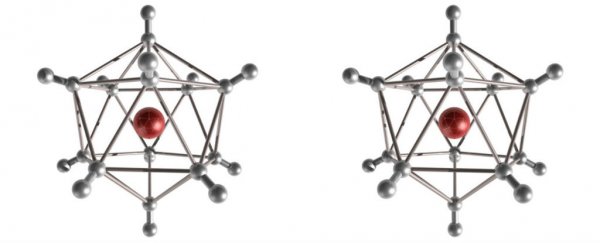As the element that makes up 75 percent of all the mass in the Universe, and more than 90 percent of all the atoms, we're all pretty well acquainted with hydrogen.
But the simplest and most abundant element in the Universe still has some tricks up its sleeve, because physicists have just created a never-before-seen form of hydrogen - negatively charged hydrogen clusters.
To understand what negatively charged hydrogen clusters are, you first have to wrap your head around their far more common counterparts - positively charged hydrogen clusters.
Positively charged hydrogen clusters are pretty much exactly what they sound like - positively charged clusters of a few or many hydrogen molecules.
Known simply as hydrogen ion clusters, they form at very low temperatures, and can contain as many as 100 individual atoms.
Physicists confirmed the existence of hydrogen ion clusters some 40 years ago, and while a negative counterpart to these clusters boasting large numbers of atoms were theorised, no one could figure out how to create one.
But that didn't stop a team of physicists led by Michael Renzler from the University of Innsbruck in Austria from giving it a shot.
First, they injected cold liquid helium droplets with hydrogen (H2) molecules. This caused the mixture to form clusters with a neutral charge.
Next, they exposed these H2-infused droplets to an electron beam, and that caused some of the hydrogen molecules to ionise, and be flung out into the surrounding vacuum as negatively charged hydrogen ions.
Soon, nearby hydrogen molecules started clustering around the negatively charged ions, and the researchers discovered that these newly formed groups could boast a few, or many molecules each.
As is often the case with the most elusive structures in particle physics, these negatively charged hydrogen clusters existed only for an incredibly fleeting moment - several microseconds (1 microsecond = 0.000001 seconds).
But that was enough time for the team to determine their geometric structures.
As Michael Schirber reports for the American Physical Society, the researchers found that the clusters only had odd atom numbers, ranging from n= 5 to n = 129.
The most stable clusters had a central, negatively charged H− ion core sounded by shells that were completely filled up by hydrogen molecules.
"The odd values implied that the clusters were a combination of several H2 molecules and a single H− ion core, held together through an induced dipole attraction," Schirber explains.
The most commonly recorded clusters had the atomic numbers n = 25, n = 65, and n = 89.
These 'magic numbers', as the team calls them, correspond to symmetrical, almost solid arrangements of H2 molecules, such as a 20-sided icosahedron. (You can see one of these formations in the image at the top of the page.)
So why does all this matter? For years now, researchers have suspected that these large hydrogen clusters could form naturally in outer space, either in cold, dense clouds, or the atmospheres of gas planets.
Now that we know that negatively charged hydrogen clusters aren't impossible, and what their most common and stable form could be, it could make it easier to identify them in nature for the time.
And at a time when researchers are questioning if dark matter - the stuff that hypothetically makes up 27 percent of the observable Universe - even exists, we need all the help we can get when it comes to deciphering the smallest constituents of the space around us.
The research has been published in Physical Review Letters.
